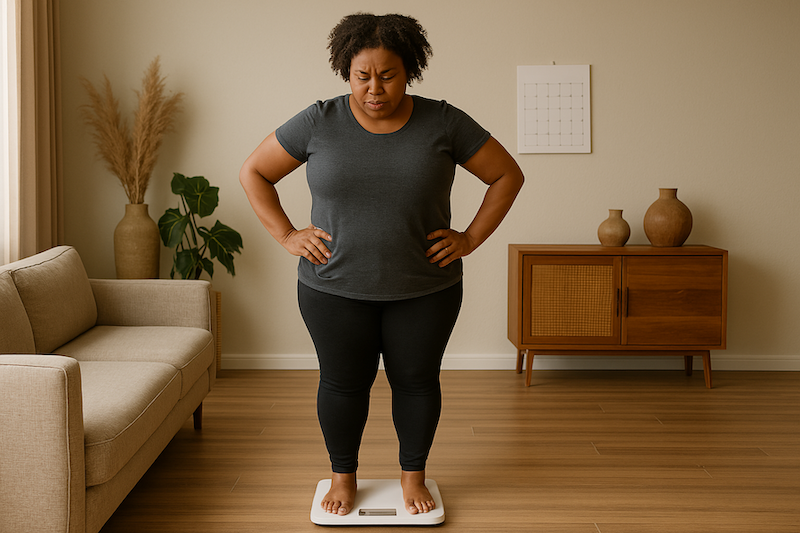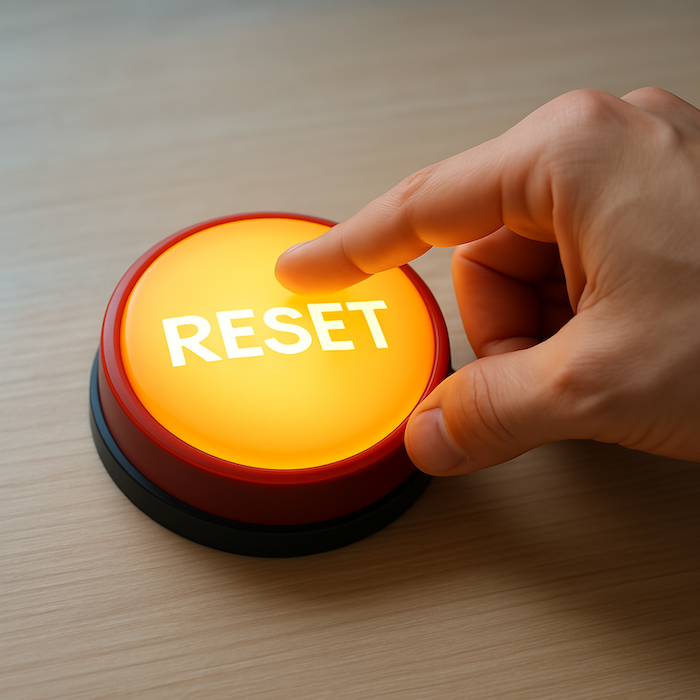How to Break a Weight Loss Plateau On Mounjaro
Hit a weight loss plateau on Mounjaro? Here’s how to break through with expert-backed tips for lasting weight loss results.

Bariendo Team
Team @ Bariendo
Momentum leads to excitement and a sense of accomplishment. And if you’ve been losing weight with Mounjaro, you’ve likely felt it. Clothes fitting differently, confidence growing, energy levels rising, and your healthier routine is starting to feel second nature. That’s progress worth celebrating!
But it’s not uncommon for that initial momentum to slow down on Mounjaro. If you’ve hit a weight loss plateau, it doesn’t mean that you’re doing something wrong or the medication has stopped working. It’s a signal that your body is adjusting, and you may need to adjust your strategy along with it.
With a few targeted changes and the right support, you can break through a weight loss plateau on Mounjaro and start seeing results again. Below, you’ll find seven practical strategies to help you get back on track and regain that lost momentum.
7 Ways to Break Through a Weight Loss Plateau on Mounjaro
Breaking through a weight loss plateau on Mounjaro is all about adjusting your approach. These strategies are designed to help you fine-tune your routine and resume steady progress.
-
Talk to Your Doctor About Adjusting Your Dosage
If you’ve been on the same dose of Mounjaro for a while and you’ve hit a weight loss plateau, it may be time to check with your doctor. As Dr. Pichamol Jirapinyo, co-founder of Bariendo, explains: “Over time, the body may adjust to the medication, leading to a slower metabolic rate and reduced weight loss despite continued use.”
This kind of plateau is a normal biological response. Your body becomes more efficient over time, and the same dose that helped you early on may not continue delivering the same results.
Mounjaro is typically prescribed in gradually increasing doses, starting at 2.5 mg and potentially increasing to as much as 15 mg per week. If you’ve remained on a lower or mid-range dose, your provider may recommend an increase—provided it aligns with your current health status, goals, and tolerance.
Dosage decisions should always be made in consultation with a healthcare provider who can monitor your overall health and your body’s reaction to the medication.
-
Reassess Your Caloric Needs
Another common reason people hit a weight loss plateau on Mounjaro is that their original caloric intake is no longer aligned with their current body weight. As you lose weight, your body needs fewer calories to function. That means you need to eat fewer calories to maintain a calorie deficit.
Reassessing your daily intake doesn’t mean you have dramatically cut calories. Small adjustments, like reducing portion sizes, limiting high-calorie extras, or recalculating your needs with the help of a registered dietitian can make a meaningful difference.
Mounjaro can support appetite control, but it works best when paired with mindful eating and ongoing nutritional guidance. Taking the time to recalibrate your calorie needs can be the push your body needs to move past the plateau.
-
Prioritize Protein and Balanced Nutrition
Prioritizing protein at each meal can help preserve lean muscle, support metabolism, and keep you feeling full longer—all of which can help you move past a weight loss plateau. Protein also has a higher thermic effect than carbs or fat, meaning your body burns more calories digesting it. Focus on lean protein sources like eggs, fish, chicken, tofu, Greek yogurt, or legumes. These foods give your meals more staying power without adding excess calories.
But protein is just one part of the equation. A balanced plate that includes fiber-rich vegetables, healthy fats, and complex carbs supports overall health and helps prevent energy dips that can lead to overeating. If you’re unsure where to start, a registered dietician can help you create a nutrition plan to fit your current needs and weight loss goals.
-
Add or Increase Strength Training
If your activity routine has stayed the same for a while, now might be the time to shake it up by adding or increasing strength training. Building lean muscle doesn’t just help you feel stronger; it also boosts your resting metabolic rate, helping you burn more calories even at rest.
As you lose weight with Mounjaro, preserving muscle becomes more important. Without resistance training, your body may lose a mix of fat and muscle, which can slow your metabolism and make plateaus more likely. Strength training helps counteract that by promoting muscle retention and supporting continued fat loss.
You don’t need an intense gym routine to see benefits. Bodyweight exercises, resistance bands, or light weights a few times a week can make a noticeable difference. The key is consistency, and choosing movements you enjoy enough to stick with long term.
-
Improve Your Sleep Quality
If you’ve hit a weight loss plateau on Mounjaro, don’t overlook your sleep. Poor or inconsistent sleep can disrupt hormones that regulate appetite, metabolism, and fat storage, making it harder for Mounjaro to do its job effectively.
When you’re sleep-deprived, your body produces more cortisol, a stress hormone that can promote fat retention and trigger cravings. At the same time, levels of ghrelin (the hunger hormone) increase, while leptin (the hormone that signals fullness) decreases. Even with Mounjaro helping to manage appetite, these hormonal shifts can lead to subtle overeating and weight loss plateaus.
Getting consistent, high-quality rest also gives your body the reset it needs to function optimally. If sleep has been a struggle for you, focus on building a wind-down routine, limiting screen time before bed, and going to sleep at the same time each night. Even small improvements in sleep can help you move past a plateau.
-
Manage Stress and Cortisol Levels
Chronic stress can quietly sabotage your weight loss progress, even when you’re using a powerful tool like Mounjaro. When stress levels stay high, your body produces more cortisol, which can increase fat storage (especially around the midsection), disrupt sleep, and interfere with your appetite and energy levels.
While Mounjaro helps regulate hunger signals, elevated cortisol levels can override those benefits, making you more likely to reach for high-calorie comfort foods or feel hungrier throughout the day. Stress can also sap your motivation to stay active or prepare balanced meals, creating a ripple effect that contributes to plateaus.
Small daily habits like deep breathing, short walks, journaling, or spending time outdoors can help regulate your nervous system and support better results. If stress has been building, consider speaking with a healthcare provider about additional support or coping strategies.
-
Move More Throughout the Day
If your structured workouts are consistent but your weight has still plateaued on Mounjaro, daily movement could be the missing piece. Non-exercise activity thermogenesis (NEAT) refers to the calories you burn through everyday movements like walking, stretching, cleaning, or taking the stairs. These small bursts of activity can add up and help tip the scale in your favor.
As you lose weight, your overall energy expenditure naturally decreases. That means your body may burn fewer calories doing the same things it used to, which can contribute to a plateau. Finding simple ways to move more throughout the day can help offset this shift and support continued fat loss.
Try parking further from entrances, taking walking meetings, or setting a reminder to stand up and stretch every hour. These habits may seem small, but they play a powerful role in keeping your metabolism active and your progress steady.
What is a Weight Loss Plateau On Mounjaro?
A weight loss plateau on Mounjaro happens when you stop losing weight for several weeks, even though you’re still taking the medication and following your plan. It can feel frustrating, especially after seeing steady results early on. But the reality is, plateaus are a normal and expected part of any weight loss journey.
In clinical research, plateaus have been observed as part of the natural progression of weight loss with GLP-1 receptor agonists like Mounjaro. A recent analysis from the SURMOUNT program found that most participants experienced a period of weight stabilization after initial loss, underscoring the importance of adapting strategies over time.
This doesn’t mean that you need to stop taking Mounjaro. It’s a signal that your body has reached a new set point—and it may be time to adjust your approach to keep progressing.
Are Weight Loss Plateaus Common On Mounjaro?
Clinical trials have confirmed that weight plateaus are a common part of long-term treatment with Mounjaro. In one study published in The New England Journal of Medicine, participants lost up to 22.5% of their body weight with tirzepatide—but the rate of loss slowed over time as the body adapted to treatment.
According to Dr. Jirapinyo, “A weight loss plateau can occur if calorie intake and physical activity are not adjusted as weight decreases.” This is because your body requires fewer calories to function as you lose weight, and that shift can affect your progress over time.
The good news? These plateaus are temporary. With the right adjustments and support, you can continue to make steady progress toward your goals.
What Causes Weight Loss Plateaus On Mounjaro?
There’s no single reason why weight loss plateaus happen on Mounjaro. They’re usually the result of many small changes over time. Here are a few of the most common causes to be aware of.
Your Body Adjusts to the Medication Over Time
When you first start taking Mounjaro, your body responds strongly to its effects — especially the way it regulates appetite and blood sugar. But over time, your system can adapt to the medication. As this adjustment happens, the initial appetite suppression may feel less noticeable.
If you’ve been on the same dose for a while and your progress has plateaued, talk to your provider. They can assess whether your body has reached a new baseline — and help decide whether a dose adjustment or another type of support is right for you.
Lower Caloric Needs As You Lose Weight
As you lose weight, your body becomes more efficient — which means it burns fewer calories to do the same activities. That’s a good sign that your metabolism is adapting, but it can also make continued weight loss more challenging if your routine stays exactly the same.
Smaller bodies naturally require less energy to function. So even if you haven’t changed your eating habits, what used to create a calorie deficit might now just be enough to maintain your current weight. This shift in energy balance is one of the most common — and overlooked — causes of a weight loss plateau.
Rather than making drastic changes, a few simple adjustments to your nutrition or activity level can help you re-establish that calorie deficit and get results moving again. Working with a dietitian can also help you find a sustainable plan that supports where your body is now — and where you want to go next.
Behavioral Factors Can Sneak In
Even with the best intentions, small changes in daily habits can creep in — and they’re often easy to miss. You might be snacking a little more often, estimating portions instead of measuring, or skipping workouts here and there. None of these things are deal-breakers on their own, but together, they can quietly stall your progress.
Stress, lack of sleep, and changes in your routine can also influence your eating patterns and activity levels — sometimes without you even realizing it. And because Mounjaro helps regulate appetite, it’s easy to assume you’re still in a calorie deficit when you may not be.
That’s why checking in with yourself — and your care team — is so important during a plateau. Taking an honest look at your habits can reveal small shifts that are worth adjusting, and it’s often those small changes that help restart your momentum.
When to Consider Additional Support
If you’ve tried adjusting your routine and the scale still isn’t moving, it might be time to consider additional support. Plateaus that last for several weeks — despite staying consistent with Mounjaro and following your plan — can be a sign that your body needs something different.
This doesn’t mean you’ve hit a dead end. In fact, it’s often an opportunity to explore new tools that can help you continue making progress. For some patients, that might include working with a registered dietitian to fine-tune nutrition. For others, it could mean combining Mounjaro with a non-invasive weight loss procedure, like ESG Stomach Tightening™ or non-surgical gastric balloon, to help break through a stubborn plateau.
Bariendo’s team of experts can help you assess what’s working, what’s changed, and what your body needs now, so you can keep moving forward with clarity and confidence.
Wrapping Up
Plateaus can be frustrating, but they’re not a sign that your progress has stopped for good. In fact, they’re a normal part of the weight loss journey, even with a medication like Mounjaro. Your body is adjusting, and that’s a positive sign that change is happening beneath the surface.
The key is not to give up, but to make informed adjustments that reflect where you are now. Whether it’s a small tweak to your routine, a deeper look at your nutrition, or a conversation with your care team, there are always next steps available.
At Bariendo, we’re here to help you move past plateaus and toward lasting results, with expert guidance, non-surgical options, and support every step of the way. Schedule your free consultation to learn more!

